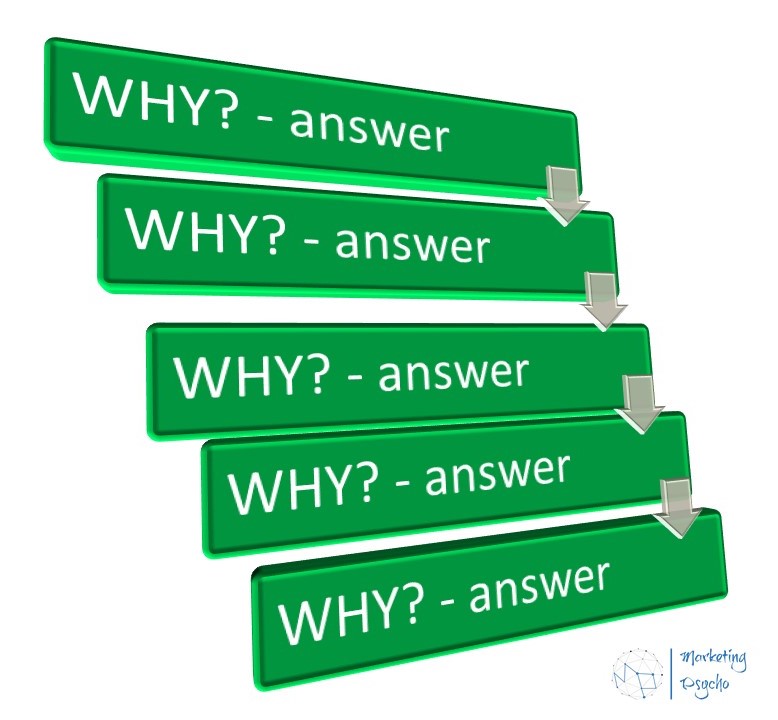Five whys (also 5 whys) is a tool for finding the root cause of a problem. When you find an error or a problem, it is not always possible to determine the true cause of what happened at first glance. Often, what seems obvious at first, then turns out to be only a superficial cover. Therefore, to correctly and clearly understand the essence of the problem, this 5 whys technique is used.
The developer of 5 whys is Sakichi Toyoda, a Japanese entrepreneur and inventor. This concept was first applied by Toyota (whose founder is also Sakichi Toyoda), after which it was distributed worldwide.
5 Whys Methodology
The essence of the 5 whys methodology is to consistently ask 5 questions that begin with the word “Why”. Each question is added to the answers to the previous one. This tool assumes that 5 questions are enough to identify the true cause of the situation that occurred. But this is a fairly conditional figure. If you have asked 5 questions, but have not yet come to a logical conclusion, then you need to continue. But do not get carried away, since the main goal is to find the cause, and not to collect a lot of complaints and dissatisfactions.

As a rule, the discussion takes place in a team, among those people who are related to the situation or are familiar with it. It is best to choose a leader to manage the meeting. It is them who will clearly identify and voice the problem, will ask questions, and will also have to understand exactly when to complete the process so that the meeting does not turn into a disorderly event.
The problem should be clear to all those gathered, it should be specifically formulated and not contain generalizations. And remember, you are going to understand and decide, and not punish and find the culprit to point a finger. Then the leader begins to ask questions as many times as the current situation requires. Often five questions are enough, but it can be either less or more.
After the cause is identified, it is necessary to make a plan with certain steps to eliminate it. This applies not only to the situation that is being solved at the moment, but also to avoid its repetition in the future. That is, you should develop exactly those measures that will be able to prevent the occurrence of such a situation in the future, and not make a one-time decision.
As a result, there should be a logical chain at the end of which there is an answer to the questions: why did this happen? What should be done to fix it? And what should be done to prevent this in the future?
It is not necessary to create a team. It all depends on you and your situation, the main thing is to find the answer. The advantage of this technique is that you do not need to have special knowledge to use it. At the same time, it can be applied in any field of business, and in the ordinary everyday life of people.
We will take an example of using 5 whys in marketing from the book by Scott Brinker Hacking Marketing: Agile Practices to Make Marketing Smarter, Faster, and More Innovative.
5 Whys in Marketing
Here is the example of how you can apply 5 whys in your marketing activities.
- Why didn’t our landing page convert more visitors?
Because people didn’t take our call-to-action offer.
- Why wouldn’t they have taken it?
Either our offer wasn’t attractive enough, or we were asking for too much with the call to action.
- Why wouldn’t the offer have been attractive if they intentionally clicked through to that landing page?
Maybe where they clicked from led them to expect something else.
- Why would they have expected something else?
The ad or e-mail they clicked to get there may have had a mismatched message or, in context, implied something very different.
- Why would that have happened?
Our search advertising and e-mail marketing efforts are disconnected from landing page optimization on our website.
It is worth noting that there are quite complex situations in which there are several causes of occurrence. In this case, for more truthful results, it is better to analyze each identified cause separately to already develop specific actions for them, and not to mix them.
Find more analytical and strategic marketing information to improve your business performance in the corresponding sections of the website.




